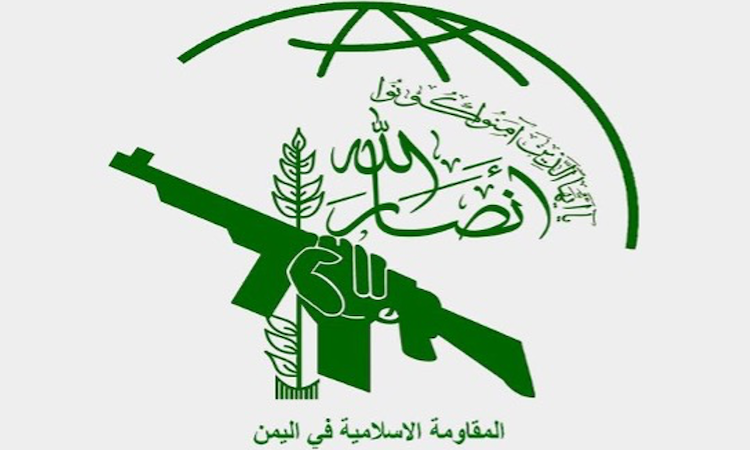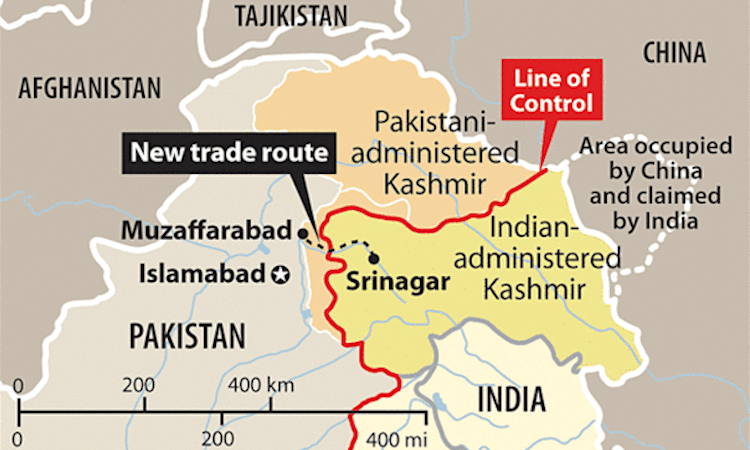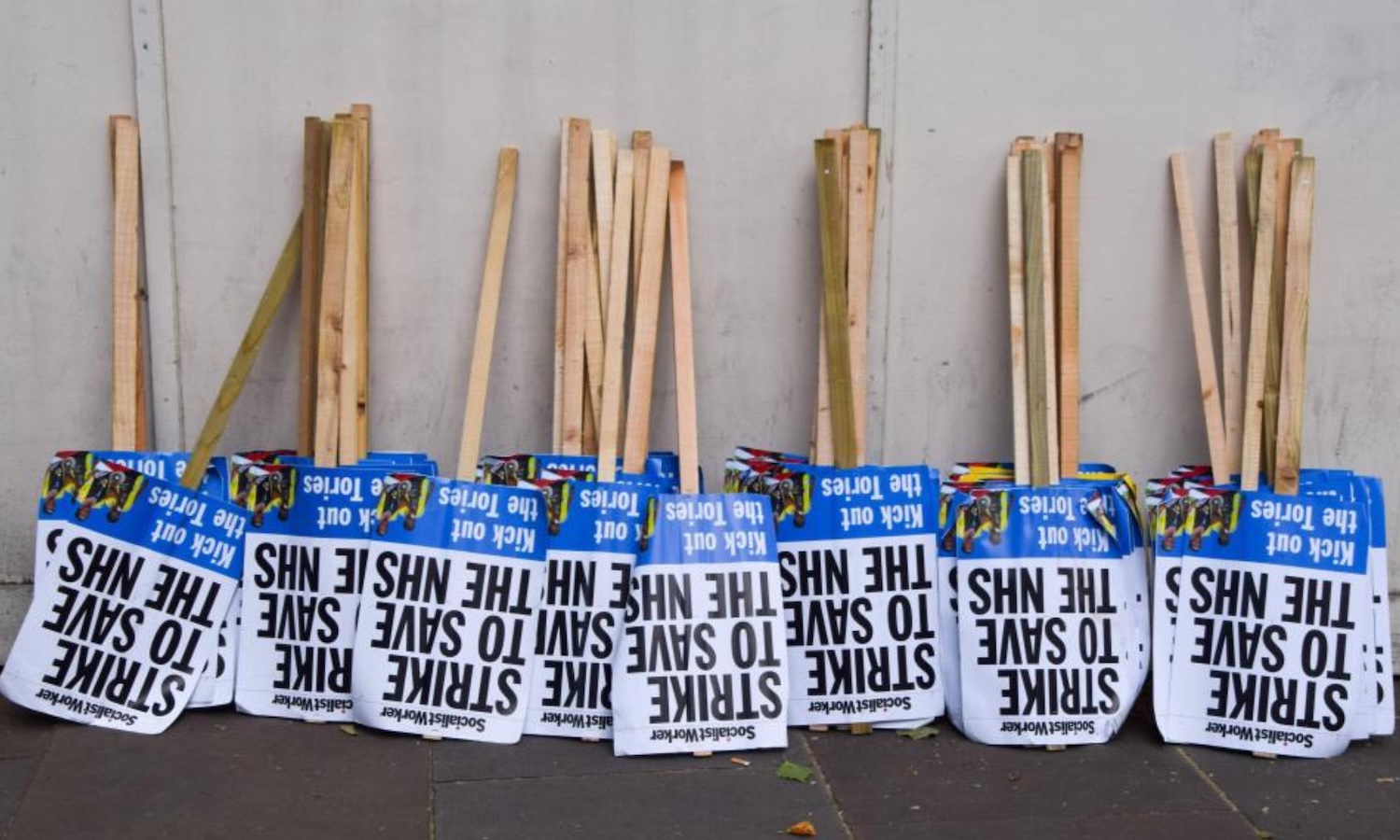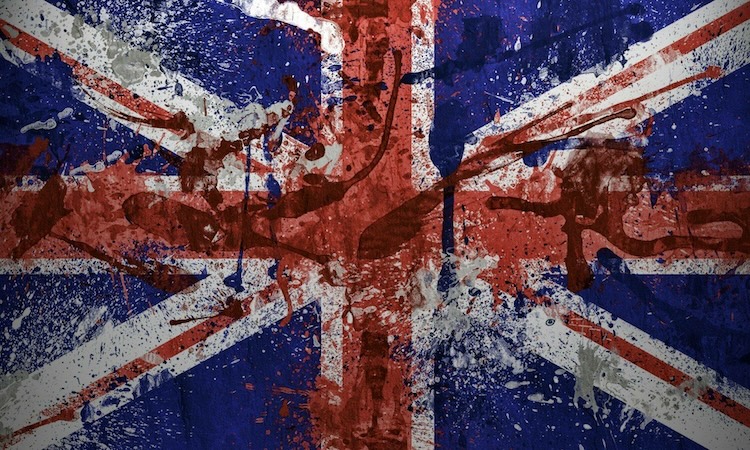As of July 2023, protesters have been taking to the streets in Aden, the de facto capital of the Saudi/UAE coalition-occupied southern portion of war-torn Yemen.
Amidst a blistering summer heatwave, they are only receiving six hours of electricity a day; this in a region where there is no shortage of natural resources for fuel. Additionally, the economy is in an unenviable state even by the standards of today’s capitalist crisis, with sky-high price inflation and the resultant soaring crime rates making life ever more unliveable for Yemenis in the occupied governorates.
Whilst protests over the very low standard of living in the coalition-occupied areas is not a new phenomenon, increasingly the rage of Yemenis at the economic situation is transforming into political demands for an end to the occupation.
According to the Jerusalem Post (no friend to Yemen), protesters have adopted slogans such as “Down with the STC” (Southern Transitional Council – the UAE-controlled occupation force) and openly acknowledge that the situation is better in the northern areas governed by the Ansar Allah (Houthi) resistance movement. Unsurprisingly, the coalition’s security forces are doing what they can to violently suppress the protests.
One country, three governments
For readers who are unfamiliar with the situation in Yemen, the country is claimed by at least two competing authorities, arguably more.
The northwestern portion where most of the population resides – including the official capital and largest city Sana’a – is administered by the Ansar Allah popular resistance movement (typically referred to as ‘Iran-backed Houthi rebels’ by corporate media pen pushers). This movement is fiercely anti-imperialist and anti-zionist, and for the past eight years has been locked in a bloody liberation war with a Saudi/UAE-led coalition force – backed by US and British imperialism – that invaded the country in 2015 to crush the movement and topple its Sana’a-based government.
The southern and eastern portions of Yemen are controlled by the invading coalition forces and, until mid-2022, were administered by two different entities – the so-called ‘internationally-recognised government’ (henceforth referred to as IRG for brevity) and the Southern Transitional Council (STC). These two entities, loyal to Saudi Arabia and the United Arab Emirates respectively, previously fought each other for control of the key port city of Aden, and since April 2022 have formed a shaky alliance against Ansar Allah, reflecting the interests of their sponsors.
The IRG consists of the old pro-Saudi, pro-US government officials, like ex-president Abd Rabbuh Mansur Hadi, who were deposed by an Ansar Allah-led popular uprising in late 2014. Despite its much-vaunted ‘international recognition’ and its nominal authority over most of Yemen’s southern and eastern landmass, in practice the IRG attracts little loyalty and is barely more than a tool in the hand of Saudi Arabia’s Crown Prince Mohammed bin Salman (MbS).
This was brazenly demonstrated last year when Riyadh decided to remove Hadi from leadership on a whim, despite having ostensibly waged a seven-year war to restore him as the “legitimate president”. The IRG’s forces consist of various rival tribes, many with ultra-reactionary salafist and al-Qaeda sympathies, which are motivated mainly by tribal and sectarian dislike of Ansar Allah. They are supplemented by foreign mercenaries fighting for money.
The STC essentially serves as a proxy force for Abu Dhabi, much as Hadi and his cronies do for Riyadh. However, perhaps reflecting the UAE’s stronger position in Yemen in comparison to Saudi Arabia’s quagmire, its leader Aidarus al-Zoubaidi has been able to harness significant popular support in southern Yemen, even seizing military control of Aden in 2018 when Hadi attempted to remove him from his position as governor there.
The STC has achieved this through a potent ideological selling point: demanding an independent state of South Yemen.
Who wants secession for south Yemen?
At first glance, the South Yemeni independence movement – known as the Southern Movement – may appear to be an obvious candidate for internationalist socialist solidarity. During the cold war, Yemen was split into a capitalist north (YAR) and a socialist south (PDRY), until the south was subsumed into the north in 1990 following the loss of Soviet support.
A bloody two-month war followed in 1994 as southerners tried and failed to re-secede.
Unfortunately, there is very little socialism visible among the lackeys of Prince Mohammed bin Zayed who dominate this movement. Indeed, the movement’s website carries an article justifying the murderous imperialist invasion of their homeland, equating it to Nato “saving lives in Bosnia” – an unintentionally apt analogy in this author’s view.
There is virtually no mention of Marx, Lenin or any kind of socialist consciousness at all in the movement’s propaganda output; rather, all that can be seen is an aggressive, borderline-hysterical xenophobia towards anyone residing in the country’s northern regions.
It is highly interesting to note that, despite the separatist propaganda, for the vast majority of recorded history there does not appear to have been any concept of north and south Yemen being two distinct nations; rather, Yemen was always viewed as one integral country. Separatist sentiments only appear to have emerged sometime after British imperialists captured Aden and incorporated it into their growing empire in the mid-19th century.
Did Britain deliberately pursue a policy of creating an artificial ‘South Yemeni’ identity in its Aden colony? The parallels with Hong Kong separatism in particular are striking. A strategic port city, torn away by force from its native country to become a British colony, its people indoctrinated over many generations to hate their former brethren in the old country and view themselves as a superior breed apart.
Such ruthless divide-and-rule policies were (and still are) imperialism’s bread and butter. Given the comparative lack of historical literature about the Aden Protectorate compared with well-studied Hong Kong, it is difficult to say for certain, but it seems very likely that south Yemeni separatism is ultimately a cursed child of British imperialism.
A brief overview of socialist Yemen
Nonetheless, the Aden Protectorate was no exception to the global wave of decolonisation that took place in the 1950s and 60s, as a national-liberation movement emerged led by the Marxists of the National Liberation Front (NLF) and began a fierce anti-British struggle.
This liberation struggle was eventually successful, and in 1967 the colony became the independent People’s Republic of Yemen. In 1969, an internal reshuffle consolidated the power of the Marxist-Leninists, who proclaimed the People’s Democratic Republic of Yemen, run on scientific socialist principles.
Socialist countries, particularly those that no longer exist, are always subject to something of an information blackout by mainstream western historians. However, even by bourgeois standards the former PDRY can seem an enigma to those wanting to know more today. Detailed English-language information about its development and history is very hard to find in modern Marxist literature.
Some useful information can be found in out-of-print books such as Fred Halliday’s Arabia without Sultans (1975) and in the chapter contributed by the same author to the 1983 volume Revolutionary Socialist Development in the Third World. (A solidarity organisation called the Gulf Committee put out material at the time, but we have been unable to locate an online archive of its material.)
From the information that is available, it seems clear that despite the country’s poverty and lack of resources, there was a rising standard of living, the building of an encompassing welfare state, and huge strides in promoting equality between men and women in what is traditionally one of the most religiously conservative areas of west Asia. This development relied heavily on fraternal aid from the Soviet Union, the German Democratic Republic, China and Cuba.
In addition, there appears to have been a long internal struggle between rival wings of the Yemeni Socialist Party (YSP), which ruled the country from 1978: one led by Abdul Fattah Ismail and the other by Ali Nasir Muhammad. The fortunes of the two factions seems to have shifted on the basis of which side was more favoured by the Soviet leadership.
The significant precursor to this later rivalry was the overthrow and murder of the country’s second president, Salem Rubaya Ali, who had led the left wing of the National Front for the Liberation of South Yemen (NLF) during the liberation struggle. Rubaya Ali was considered particularly close to China (as well as more militantly anti-imperialist and more in touch with the realities of Yemeni society), while those who deposed him were seen as Soviet-leaning and more bureaucratic (this during the time when the USSR was sinking into revisionism and Mao’s China was conducting fierce ideological warfare against this slide).
Rubaya Ali’s National Front had merged with other progressive groups to create the United Political Organisation NF in 1975, and he had opposed Abdul Fattah Ismail’s plan to replace this united front with a new socialist party. In 1971, Ali Nasir Muhammad was appointed prime minister, but in 1978, Nasir overthrew and executed Rubaya Ali, replacing him as president.
The ensuing rivalry between Ismail and Nasir culminated in a brief but bloody civil war in 1986, during which Ismail was killed, Nasir removed from power and the forces of both sides largely decimated.
Interestingly, relations between the capitalist YAR and the socialist PDRY were generally cordial, as opposed to the extreme imperialist aggression that characterised most similar cold war-era divisions (Germany, Korea, Vietnam). Surrounded by feudal absolutist monarchies and sheikhdoms, the two Yemeni states were the only two republics on the Arabian peninsula.
The Yemen Arab Republic (YAR) had been established by a bitter war in the 1960s, in which one side was backed by Gamal Abdel Nasser’s Egypt and the other by the Saudi monarchy. The greater prosperity of the YAR combined with the destruction caused by the southern civil war and the loss of Soviet aid to the PDRY as a result of Gorbachev’s policies of appeasing imperialism combined to bring about an overwhelming sentiment in favour of reunification, which took place in 1990.
Reunification and today’s separatism
Naturally, this took place on the YAR’s terms. Despite promises to the contrary, most power was concentrated in the hands of former YAR officials. Resentment over the loss of socialist securities and a feeling of exploitation by the ‘northerners’ led to a renewed attempt to secede in 1994.
This was brutally crushed by President Ali Abdullah Saleh with the help of salafist extremists and, crucially, the revisionist leader Ali Nasir Muhammad. Notably, the northern-based Zaydi shia forces gathered around the al-Haq party – the ideological predecessor to the Ansar Allah movement – refused to support the war against the separatists and stayed neutral, attracting the ire of President Saleh.
Considering the above, it is perhaps understandable that secessionist views are very popular amongst those residing in the regions of the former PDRY. However, this sentiment is clearly being exploited to the hilt by US and British imperialism – through their Emirati allies – to foment division in Yemeni society and prevent Yemenis from uniting under the anti-imperialist leadership provided by Ansar Allah.
Thus it is no mere coincidence that the frontline between the liberated regions and the Saudi/UAE-occupied regions roughly corresponds to the old border between the YAR and the PDRY.
If there are any anti-imperialist or Marxist elements amongst the southern secessionists of today, their influence is negligible. The movement is entirely controlled by the pro-imperialist, pro-zionist STC, whose senior officials go as far as to openly express support for the Israeli regime – a taboo in muslim nations that is rarely crossed even by US allies.
In summary, the issue of ‘north’ and ‘south’ Yemen – as far as the Marxist perspective is concerned – is not related to the national question, nor has it ever been. During the existence of the PDRY, it was a question of capitalism vs socialism; ie, the raison d’etre of the PDRY was its existence as a socialist state, similar to that of the former GDR.
As soon as the question of socialism was removed from the equation, the ‘South Yemen’ separatist movement quickly degenerated into an objectively reactionary, xenophobic, pro-imperialist phenomenon built on divisions artificially created by British imperialism and perpetuated by imperialist-aligned Gulf states with expansionist ambitions.
The leadership of Ansar Allah understands this well, and refuses to acquiesce to a de facto partition of the Yemeni nation that will only benefit western imperialism. The separatists, in turn, try to disingenuously portray Ansar Allah as foreign colonial invaders, the irony apparently being lost on these unashamed collaborators with zionism and imperialism.
Hence we are faced with a scenario that is intriguing but far from unprecedented in world history: those who were communists three decades ago have now become the worst pro-imperialist compradors, whilst those who were previously mired in reactionary tribalism have now become the foremost torchbearers of revolution and national liberation.
China-brokered peace offers hopes to an end of the war
Another vital piece in this complex puzzle is the earth-shaking events that are occurring in the middle east as a result of Chinese diplomacy.
Quietly, behind the scenes, China’s combination of non-interference, mutual respect, assiduously delivering on commitments, and offering no-strings-attached trade and development opportunities has persuaded Saudi Arabia’s rulers (formerly the imperialists’ most reliable axe-wielders in the region after Israel) to bury the hatchet with what had seemed to be their most intractable regional opponent, Iran (cornerstone of the anti-zionist and anti-imperialist axis of resistance).
This has both angered and terrified the imperialists, since it opens up the prospects for the isolation and defeat of many US-backed forces whose job is to maintain US hegemony in the region, from Yemen to Syria and on to Palestine.
This seismic shift in geopolitics was evidently a first step towards bringing both Saudi Arabia and Iran into Brics – the grouping of five major developing economies that has been steadily pushed into ever more united and overtly anti-imperialist activity. The recent expansion of Brics from five to 11 nations had been long expected. In the current conditions of a deep economic crisis combined with US economic brigandage, no fewer than 22 countries had formally applied for membership in recent months, while a total of 40 had expressed an interest.
Anyone who had been following the progress of the war in Yemen – and of the heroic resistance to imperialism and its proxies put up by the Ansar Allah-led forces – immediately understood when the leaders of Iran and Saudi Arabia shook hands with one another in front of the world’s press that not only the politics of the middle east in general were changing, but that Saudi involvement in the war in Yemen specifically was likely to be progressively wound down.
The huge losses that had been inflicted on Saudi oil infrastructure by the resistance forces, and the resistance’s increasingly sophisticated use of drone warfare no doubt also played their part in creating an atmosphere in which the Saudis were becoming amenable to the idea of a negotiated end to the war.
Subsequent to the Saudi-Iran deal, talks have begun between the Saudis and Ansar Allah and prisoner exchanges have been made. While the war will not be over till all the occupation forces have left the country, the prospects for this being achieved before too long are looking increasingly good.
And perhaps even more so with the recent news that not only Saudi Arabia but also the United Arab Emirates has been admitted to the Brics.














